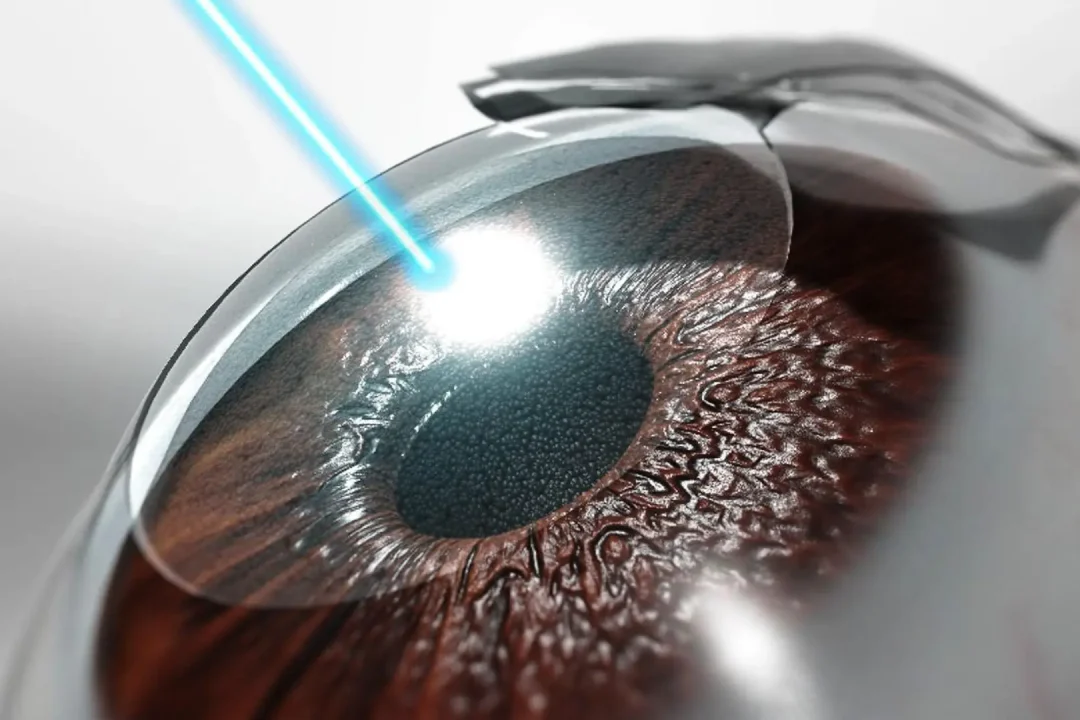Egg Donation, Sperm Donation, Embryo Donation, Surrogacy, and Gestational Carrier.
- Home
- All Services
- Medical Services in Iran
- Eye Surgery in Iran
Medical Services in Iran
LASIK, LASEK, PRK, Femto SMILE, Cataract, and Glaucoma Surgery.
Eye Surgery
Get a free consultation
Get a free consulatation from us in WhatsApp right now!
Message: +989024444698
Eye Surgery in Iran:
Advanced Vision Care
Eye surgery in Iran encompasses a wide range of sophisticated procedures designed to correct vision problems, treat eye diseases, and improve overall eye health. Iranian ophthalmologists are highly skilled in performing both common and complex surgeries, utilizing advanced technologies to provide patients with optimal visual outcomes. This overview article delves into the diverse field of eye surgery in Iran, exploring the conditions treated, the various surgical techniques available, and what patients can anticipate throughout their treatment journey.

Understanding Eye Surgery
Eye surgery is a specialized branch of medicine focused on surgical interventions to address various conditions affecting the eyes and visual system. These procedures can range from correcting refractive errors to treating sight-threatening diseases. The goal of eye surgery is to improve or preserve vision, alleviate symptoms, and enhance the patient’s quality of life.
Conditions Treated with Eye Surgery
Eye surgery in Iran addresses a broad spectrum of eye conditions, including:
Refractive Errors
These are common vision problems that occur when the eye doesn’t focus light properly on the retina:
- – Myopia (Nearsightedness): Difficulty seeing distant objects clearly.
- – Hyperopia (Farsightedness): Difficulty seeing near objects clearly.
- – Astigmatism: Blurred vision caused by an irregularly shaped cornea.
- – Presbyopia: Age-related loss of near vision.
Cataracts
Clouding of the natural lens of the eye.
Glaucoma
A condition that damages the optic nerve, which connects the eye to the brain.
Corneal Diseases
Conditions affecting the clear front surface of the eye (cornea).
Retinal Diseases
Conditions affecting the light-sensitive tissue at the back of the eye (retina).
Eyelid Disorders
Conditions affecting the eyelids and their function.
Eye Muscle Disorders
Conditions that affect eye alignment and movement (strabismus).
Types of Eye Surgery Procedures in Iran
Iranian ophthalmologists offer a comprehensive range of eye surgeries. Here’s a detailed overview of common procedures:
Refractive Surgery
Refractive surgery aims to correct refractive errors, reducing or eliminating the need for glasses or contact lenses.
LASIK (Laser-Assisted In Situ Keratomileusis)
LASIK is a popular refractive surgery procedure that reshapes the cornea using a laser.
Procedure
- – A thin flap is created in the cornea using a microkeratome (a blade) or a femtosecond laser.
- – An excimer laser is used to reshape the underlying corneal tissue.
- – The flap is repositioned.
-
Indications
Myopia, hyperopia, and astigmatism.
LASEK (Laser-Assisted Sub-Epithelial Keratomileusis)
LASEK is another refractive surgery option that involves lifting the thin layer of cells on the cornea’s surface (epithelium).
Procedure
- – The epithelium is loosened with an alcohol solution.
- – An excimer laser reshapes the cornea.
- – The epithelium is repositioned and a bandage contact lens is placed.
Indications
Myopia, hyperopia, and astigmatism, particularly for patients with thin corneas or dry eyes.
PRK (Photorefractive Keratectomy)
PRK was one of the first laser refractive surgeries. It involves removing the epithelium entirely.
Procedure
- – The epithelium is removed.
- – An excimer laser reshapes the cornea.
- – A bandage contact lens is placed for healing.
Indications
Myopia, hyperopia, and astigmatism, often for patients with thin corneas.
SMILE (Small Incision Lenticule Extraction)
SMILE is a minimally invasive laser eye surgery.
Procedure
- – A femtosecond laser creates a small, lens-shaped piece of corneal tissue (lenticule) within the cornea.
- – The lenticule is removed through a small incision.
Indications
Myopia and astigmatism.
ICL Implantation (Implantable Collamer Lens)
ICL involves implanting a lens inside the eye to correct refractive errors.
Procedure
- – A small incision is made in the cornea.
- – A collamer lens (a biocompatible material) is inserted behind the iris and in front of the natural lens.
Indications
Myopia, hyperopia, and astigmatism, often for patients who are not candidates for laser eye surgery.
Cataract Surgery
Cataract surgery involves removing the clouded natural lens of the eye and replacing it with an artificial lens (intraocular lens or IOL).
Phacoemulsification
This is the most common cataract surgery technique.
Procedure
- – A small incision is made in the cornea.
- – The clouded lens is broken up using ultrasound (phacoemulsification).
- – The lens fragments are removed.
- – An IOL is inserted.
IOL Types
- – Monofocal IOLs: Provide clear vision at one distance (near, intermediate, or distance).
- – Multifocal IOLs: Provide clear vision at multiple distances.
- – Toric IOLs: Correct astigmatism.
Glaucoma Surgery
Glaucoma surgery aims to lower intraocular pressure (IOP), which can damage the optic nerve.
Trabeculectomy
This procedure creates a new drainage pathway for fluid to leave the eye.
Glaucoma Drainage Devices (Tube Shunts)
These devices are implanted to help drain fluid from the eye.
Minimally Invasive Glaucoma Surgery (MIGS)
MIGS procedures use small incisions and specialized devices to lower IOP.
Corneal Surgery
Corneal surgery addresses conditions affecting the cornea.
Corneal Transplantation (Keratoplasty)
This involves replacing a damaged cornea with a healthy cornea from a donor.
Types of Keratoplasty
- – Penetrating Keratoplasty (PKP): Replacing the full thickness of the cornea.
- – Lamellar Keratoplasty: Replacing only a partial thickness of the cornea.
Corneal Cross-Linking
This procedure strengthens the cornea to treat keratoconus (a condition where the cornea thins and bulges).
Retinal Surgery
Retinal surgery treats conditions affecting the retina.
Vitrectomy
This involves removing the vitreous (the gel-like substance that fills the eye) and performing other procedures on the retina.
Retinal Detachment Repair
Surgery to reattach a detached retina.
Macular Degeneration Treatment
Injections or laser treatment to manage macular degeneration.
Eyelid Surgery (Blepharoplasty)
Eyelid surgery improves the function and appearance of the eyelids.
Procedures
- – Removing excess skin and fat from the eyelids.
- – Correcting drooping eyelids (ptosis).
- – Treating eyelid malpositions.
Eye Muscle Surgery (Strabismus Surgery)
Surgery to correct misaligned eyes (strabismus).
Pre-Surgical Evaluation and Planning in Iran
A thorough evaluation is essential before any eye surgery. This typically involves:
Comprehensive Eye Exam
A detailed examination of your eyes, including visual acuity testing, refraction (to determine your prescription), and examination of the eye structures.
Diagnostic Tests
Depending on the condition, tests may include:
- – Corneal Topography: To map the cornea’s surface.
- – Optical Coherence Tomography (OCT): To obtain detailed images of the retina and other eye structures.
- – Visual Field Testing: To assess peripheral vision.
- – Glaucoma Testing: To measure intraocular pressure and assess optic nerve health.
Discussion of Options
The ophthalmologist will discuss the appropriate surgical options, risks, benefits, and expected outcomes with you.
The Eye Surgery Procedure in Iran
The specific surgical procedure varies depending on the condition being treated. However, some general principles apply:
Anesthesia
Eye surgery is typically performed under local anesthesia, meaning the eye is numbed with eye drops or injections. In some cases, sedation or general anesthesia may be used.
Surgical Technique
The surgeon will perform the necessary procedures, using microsurgical instruments and advanced techniques.
Duration
The duration of the surgery varies depending on the procedure.
Recovery
Recovery time varies depending on the surgery. Some procedures have a quick recovery, while others require more time.
Post-Operative Care and Recovery in Iran
Post-operative care is crucial for a successful outcome. This includes:
Eye Drops
Eye drops are typically prescribed to prevent infection, reduce inflammation, and promote healing.
Eye Protection
You may need to wear an eye shield or glasses to protect your eye.
Activity Restrictions
You may need to avoid certain activities, such as swimming or strenuous exercise, for a period of time.</
Follow-Up Appointments
Regular follow-up appointments with the ophthalmologist are necessary to monitor healing and assess vision.
Eye Surgery in Iran: What to Expect
Patients considering eye surgery in Iran can expect:
Highly Skilled Ophthalmologists
Iranian ophthalmologists are well-trained and experienced in performing a wide range of eye surgeries.
Advanced Technology
Eye clinics and hospitals in Iran are equipped with state-of-the-art technology for diagnosis and treatment.
Comprehensive Care
Patients receive comprehensive care throughout the entire treatment process, from pre-surgical evaluation to post-operative follow-up.
Cost-Effectiveness
Eye surgery in Iran may be more cost-effective compared to some Western countries.
Choosing an Ophthalmologist and Facility in Iran
When considering eye surgery in Iran, it’s essential to choose a qualified and experienced ophthalmologist and a reputable medical facility. Factors to consider include:
Ophthalmologist’s Qualifications and Experience
Look for an ophthalmologist who is board-certified and has extensive experience in performing the specific type of eye surgery you need.
Facility Accreditation and Technology
Choose a clinic or hospital that is accredited and has modern facilities and equipment.
Patient Reviews and Testimonials
Read reviews and testimonials from other patients to get an idea of the quality of care.
Communication and Language Skills
Ensure that the ophthalmologist and medical staff can communicate effectively with you in your preferred language.
Conclusion
Eye surgery in Iran offers a wide range of advanced treatment options for various eye conditions. With skilled ophthalmologists, cutting-edge technology, and a commitment to patient care, Iran provides a compelling option for those seeking to improve their vision and eye health. Understanding the types of procedures available, the treatment process, and how to choose a qualified provider is crucial for making informed decisions about your eye care.
Fertility services
IVF, IVM, IUI, OI, and ICSI.
Female Infertility Treatments
Varicocele surgery, TESE, Micro-TESE, PESA, and TESA.
Male Infertility Treatments
Assisted Reproduction
Beauty & Cosmetic services
Rhinoplasty, Septoplasty, Ethnic Rhinoplasty, Fillers & Botox (Face, Lips), Facelift, Lip Lift, Brow Lift, Chin Implant, Double Chin Removal, Cleft Lip & Palate Surgery, Otoplasty, Blepharoplasty, Buccal Fat Removal, Canthoplasty, Facial Bone Contouring, etc.
Facial Surgeries
Arm Lift, Abdominal Etching, Liposuction, Gastric Balloon, Sleeve, Bypass, Abdominoplasty, Thigh & Buttock Lift, Fat Transfer, Buttock Implants, Mastopexy, Gynecomastia, Gender Reassignment Surgery, Labiaplasty, etc.
Body Contouring
Hollywood smile, Dental Implants, Veneers, Composite Bonding, Dental Crowns, Teeth Whitening, Orthodontics, Tooth Extraction, and Dentures.
Dental Procedures
Scalp Hair Transplant, Beard Transplant, and Eyebrow Transplant.
Hair Transplant
Get a free consultation
Get a free consulatation from us in WhatsApp right now!
Message: +989024444698
